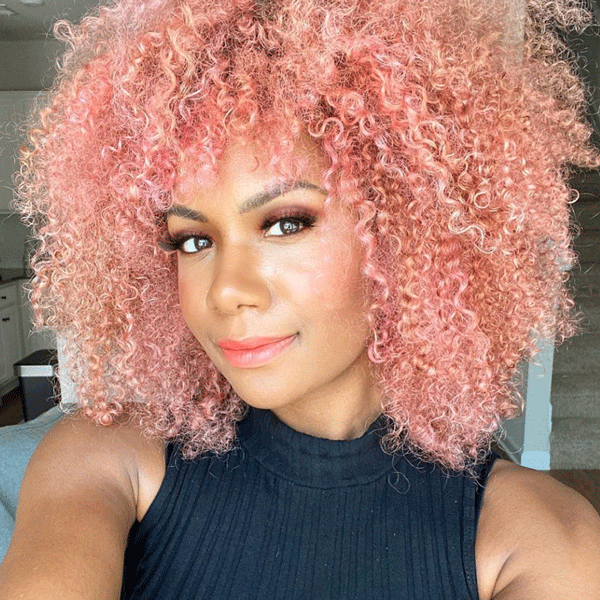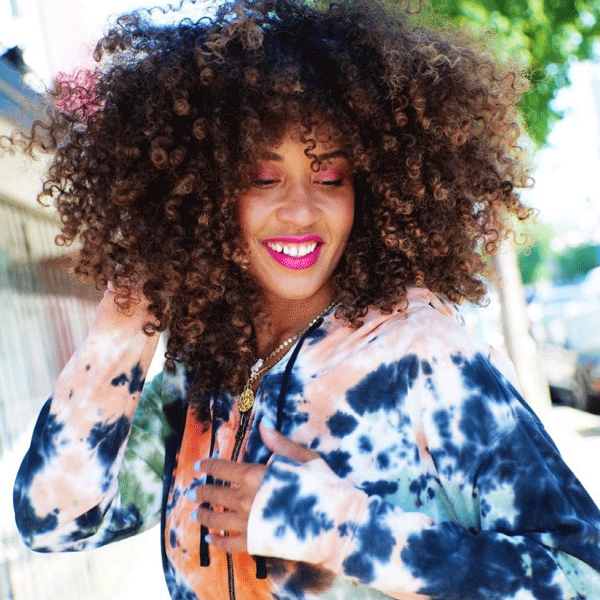Curly Clients: Summer Guide To Healthy Hair
Tips For Keeping Curls Hydrated + Healthy This Summer
Humidity, breakage and brittle texture are all part of summer for curly clients. But they don’t have to be! We tapped some serious curl experts to share their advice for maintaining moisture, preventing damage and how to care for curls after a pool day. Keep scrollin’ to read it all!
Address summer-related concerns
Consultations are always important. But hair concerns can vary depending on the time of year and location. Establish a summer hair care regime by learning about any seasonal concerns clients may have. Here’s a few questions to get started:
- Is your hair frizzy or unmanageable?
- Do you plan on swimming a lot this summer?
- Does your hair feel dry or straw-like more than usual?
- Does your hair tend to break due to tighter styles?
Want a complete guide to curly consultations? Click here for unlimited access to Christin’s class!

Clients answer “Yes” to straw-like curls?
Keep curls hydrated with a treatment schedule
Dry curls can turn brittle, frizzy and even lose their shape. Recommend clients come in for regular hydrating treatments to nourish the scalp and add moisture back into the hair. “Treatments are a super easy way for clients to pamper themselves and are one of the easiest and most beneficial ways to help them have healthy curls,” curl specialist Christin Brown (@curlfactor) explains.
BTC Team Member Kelley Brandon (@kelleyscanvas) recommends her clients come in every eight to 10 weeks for treatments. Clients with chemically treated hair are recommended every six to eight weeks.
Clients with protective styles also need to keep their scalp hydrated to avoid unwanted tension and breakage. That’s why BTC Team Member Jamal Edmonds (@lamajbackwards) recommends scalp treatments every three weeks. Braider Pearl Ransome (@pearlthestylist_) also suggests protein treatments every eight weeks to promote healthy growth.
Celebrity-stylist Drika Green (@stylesbydrik) also recommends steam treatments to not only add moisture and repair damage, but also help scalp issues like dandruff. Check out the treatment below!
View this post on Instagram
Clients answer “Yes” to summer swims?
Suggest products that protect curls before + after the pool
Whether it’s the ocean or poolside, swimming can be extremely drying for curls. Below, artists share their advice on how to protect and recover after a summer swim.
- Prep by fully saturating the hair before swimming: “Saturating the hair before swimming can help minimize the amount of chlorine and salt water the hair absorbs,” explains Drika.
- Protect the hair with a leave-in conditioner: Applying a leave-in conditioner creates a barrier between the hair and chlorine or saltwater. That’s why Jamal suggests applying the MIZANI 25 Miracle Milk before swimming—it seals in moisture while also protecting from UV rays.
- Cleanse and hydrate after: “Cleansing the hair after swimming is super important because it stops the chlorine from settling deep into the hair cuticle,” Christin explains. She recommends clients use a sulfate-free cleanser like the No-Poo Cleanser from DevaCurl to avoid drying out the hair further.
Pro Tip: For clients with protective styles, Pearl suggests tying the hair up in a bun or ponytail before swimming. Afterwards, she recommends gently cleansing the scalp with warm water and towel drying.

Clients answer “Yes” to lots of tight styles?
Help prevent breakage with these tips
High ponys, buns and tight braids are go-to styles for active clients, but excessive tension on the hair can cause major breakage. Help clients reduce stress on their scalp and prevent damage with these tips:
- Choose styles with less tension: Nicolle suggests her curly clients wear looser styles like low ponytails, ballerina buns that secure with pins instead of elastics or a loose French braid. “Also, scrunchies are great for tying the hair back without breakage,” she adds.
- Prep with a deep conditioner: “Applying a deep conditioner like Olaplex No. 6, before working out is a great way to give the hair a little extra care while it is in a tight style,” Christin explains. If your client tends to sweat, Christin suggests tying a bandana at the hairline to protect the eyes.
- Wrap protective styles to prevent frizz: Moisture and sweat can cause protective styles to frizz, so Pearl recommends her clients wrap their hair in silk scarf before working out. “Remove the scarf immediately after to let the scalp breathe and cleanse with a mixture of water and a few drops of shampoo in a spray bottle,” she adds.
Pro Tip: Curly clients tend to have finer hair around their hairline, so Kelley recommends using a super soft boar bristle brush to gently smooth the hair instead of pulling it tightly back.








